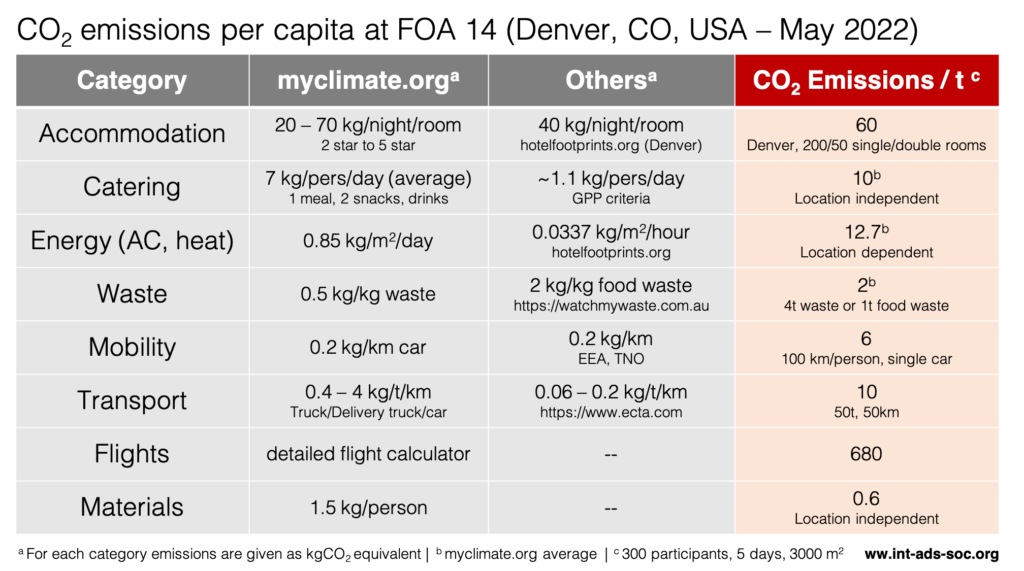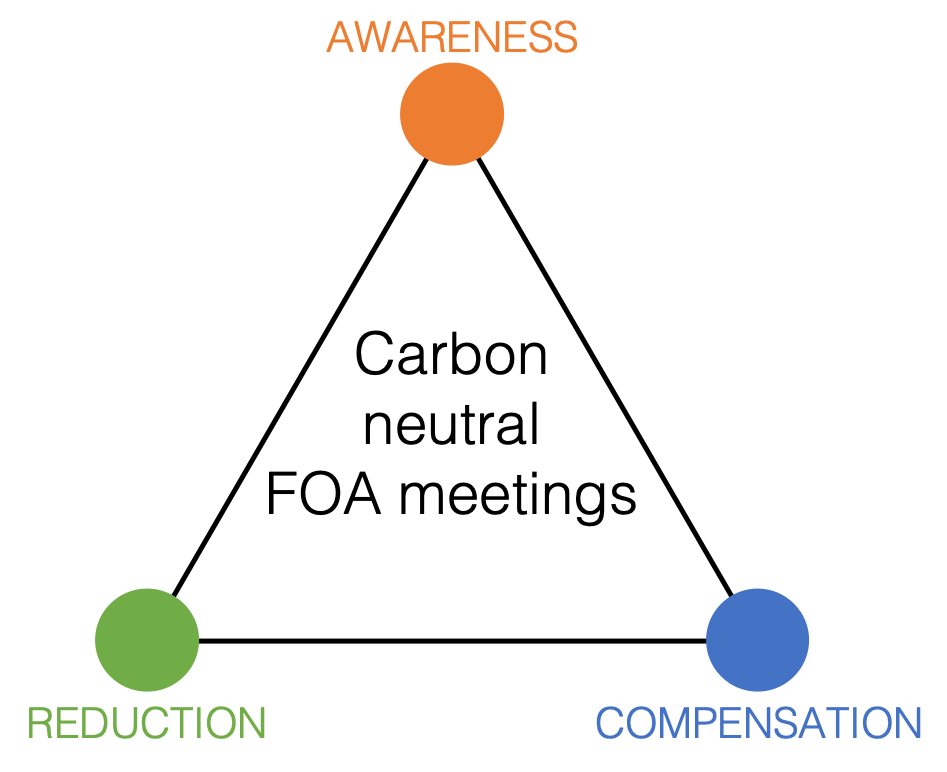Triggered by discussions at FOA-13, a IAS Working Group has been appointed to evaluate the carbon footprint caused by our conferences and to identify possibilities for its reduction. This working group is led by Benoit Coasne (Univ. Grenoble Alpes, CNRS, LIPhy, France) and includes: Anne Streb and Marco Mazzotti (ETH Zurich, Switzerland), Ryan Lively (Georgia Institute of Technology, USA), Philip Llewellyn (MADIREL, CNRS/AMU, France), Akihiko Matsumoto (Toyohashi Univ. of Technology, Japan) and Ronny Pini (Imperial College London, UK). Results from the working group will be communicated on this page, together with actions to be implemented in future FOA conferences.
A three-page report summarising findings obtained by the working group and results from the survey on carbon footprint can be found below:
At FOA-14 (Denver, CO) – 2022
Data indicate that FOA-14 will generate approximately 2.6 ton CO2/participant (see table below), for a total of 781 tons of CO2. The two major contributions to these emissions include flying (87%) and accommodation (8%). At FOA-14, we aim at compensating these emissions mostly through carbon offsetting, in the form of contributions to climate protection projects (see e.g., myclimate.org). Additional emissions reduction actions will be implemented to raise awareness among the conference participants. In practice, compensation solely through carbon offsetting would translate into a cost of 78 USD/participant (assuming a CO2 offset value of 30 USD/tCO2), corresponding to approximately 10% of the registration fees.

Beyond FOA-14
Our aim is to rethink and reinvent FOA conferences by increasing the share of emissions reduction actions relative to compensation through carbon offsetting. The working group is considering a number of ideas, including those that would limit flying (e.g., satellite conferences in parallel to the main FOA meeting and use of online/visio-conferencing) or that would make the travelling more efficient (e.g., summer school and topical workshops right before/after the main FOA meeting). Also, our community can play a key role in tackling CO2 emissions through the implementation of adsorption-based technologies to tackle a variety of industrial separations. With relevance to the energy sector, some examples include hydrogen purification, natural- or bio-gas upgrading, and CO2 capture from flue gas or air.



